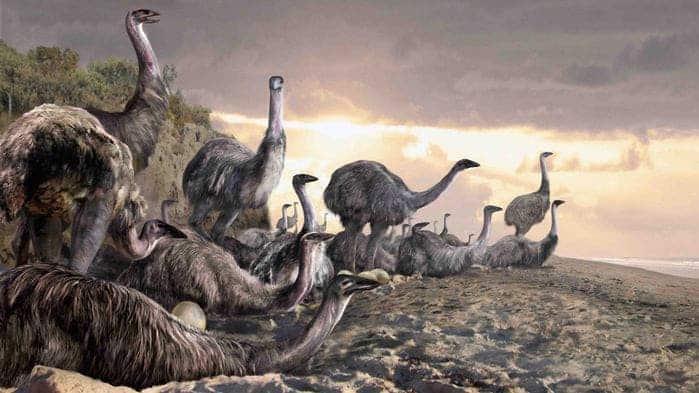Madagascar’s extinct elephant birds used to be the largest avian species that we know of. They quickly disappeared not long after humans established a permanent presence on the island off the southeast African coast. But, although humans shortly coexisted with these magnificent animals that could weigh more than a tonne, they poorly documented the birds. A new study is filling in the gaps in our understanding after researchers digitally reconstructed the brains of the extinct animals. The analysis suggests that elephant birds had a very sharp sense of smell and were nocturnal creatures.

This year was an exciting one for elephant bird research. Scientists at the Zoological Society of London reported that humans first arrived in Madagascar as early as 10,500 years ago, judging from butchered elephant bird (Aepyornithidae) remains. And, earlier last month, a research team from the same Zoological Society of London described the largest elephant bird species, aptly named Vorombe titan (meaning ‘big bird’ in Malagasy and Greek). It weighed 800kg and stood up to 3 meters tall — that’s 20 centimeters taller than an ostrich and quite larger than many dinosaurs.
Despite their formidable size, these herbivorous creatures are thought to have been very docile, having lived for thousands of years without any natural predators. When they encountered human hunters, they likely posed no resistance. Elephant birds, along with other Malagasy megafauna such as the giant lemur, became extinct about 1,000 years ago. At that time, there weren’t any scientists on the island, unfortunately, so we don’t really have accurate descriptions of their internal anatomy or behavior.
Luckily, modern science has the tools that can help us learn intimate details about the lives of animals even though they’re long gone. Although there is no elephant bird brain tissue, researchers at the University of Texas at Austin produced digital reconstructions of the skulls of two elephant bird species. The CT scans show that the optical lobes — the part of the brain responsible for processing vision — were almost nonexistent, which means the elephant bird was likely as blind as a bat. Meanwhile, the olfactory bulbs, which process smell, were much larger than expected in one of the elephant bird species and slightly larger than expected in the other.
Judging from their olfactory bulb sizes, the American researchers think that Aepyornis maximus — the species with the large bulbs — lived in the forest, while the smaller A. hildebrandti probably lived in open grasslands.
Previously, researchers thought that the closest living relative to the elephant bird was Nea Zealand’s giant moa. This has led many to believe that elephant birds were day-time foragers as well. The genetic analysis of the new study, however, suggests that the flightless and nocturnal kiwi might be a better fit.
Based on the new genetic relationship and sensory information, the authors conclude in the Proceedings of the Royal Society B that elephant birds were likely nocturnal animals. Their poor eyesight was not a problem, as today’s kiwi can attest, especially considering that elephant birds had no natural predators to worry about — until they met us.






